Comparing the Everest Base Camp (EBC) Trek and the Annapurna Base Camp (ABC) Trek, Everest would mostly be considered more difficult. It is especially due to the trek’s higher altitude and longer duration.
The altitude peak for the ABC trek is around 4,130 meters, while EBC is 5,364 meters. So there is a greater possibility of altitude sickness in the Everest trek. EBC is also typically 10–14 days to complete, compared to the 7–10 days for ABC and has longer stretches of challenging terrain. That said, ABC also has quite steep climbs, many stone steps and can be demanding in its own right.
Annapurna trek subjects you to dense forests, rice fields and traditional Gurung villages. You get to enjoy the close vistas of massive peaks like Annapurna I, Dhaulagiri and Machapuchare. The trek features diverse scenic landscapes with frequent teahouse and village breaks.
Everest feels faraway and dramatic as you venture deeper into the Khumbu area. En route you trek past Sherpa villages, vibrant forests, meadows and glaciers. Breathtaking vistas of Everest, Lhotse and Ama Dablam are your constant trek companions. However, the terrain is progressively more exposed and barren at higher elevations.
As for who should take which trek, ABC is more suitable for first timers or those who have less time. Whereas EBC is appropriate for experienced trekkers or those who can do a longer high altitude trek. Both treks are worthwhile in their own way.
ABC offers more comfort and variety while EBC offers prestige and more dramatic landscapes. Ultimately, it relies on your fitness, experience and what sort of adventure you look for. With proper planning, most fit trekkers can complete both treks safely and have a life-changing experience.
Annapurna vs Everest Height
In terms of altitude, Everest Base Camp is slightly higher than Annapurna Base Camp. EBC is at approximately 5,364 meters (17,598 feet), whereas Annapurna Base Camp height is around 4,130 meters (13,550 feet). It’s over 1,200 meters of difference that makes the Everest trek harder both in acclimatization and physical effort.
At a greater altitude, oxygen is thinner with a higher possibility of altitude sickness and requiring a slower ascent. But since the Everest trek is longer and reaches higher altitudes, there is an acclimatization day included in the itinerary. This helps you adjust well with the shifting elevation and reduce the risk of altitude sickness.
The Annapurna Base Camp trek, despite being a high altitude journey, is a bit less risky for altitude sickness. So, it does not require that much acclimatization time. The ABC trek still involves a lot of elevation gain and steep climbs, particularly over forest trails and stone stairways.
Ultimately, Annapurna vs Everest height is a defining factor in determining the level of difficulty, safety protocols and required fitness level for each.
Annapurna Base Camp Vs Everest Base Camp – Trek Duration and Daily Walking Hours
The trek to Annapurna Base Camp takes 7 to 10 days, depending on the starting point, trek pace and side trips. The trek each day takes around 4 to 6 hours on fairly steep paths through forest, stone stairs and hillside flattening.
It is a well established path and passes through numerous villages, so it’s straightforward enough to locate resting spots and lodges. For time-constrained or first time high altitude trekkers, ABC is a short but fulfilling mountain experience without losing out on Himalayan scenery or cultural diversity.
In contrast, the Everest Base Camp trek usually takes around 10 to 14 days to complete, including acclimatization days to help your body get used to the higher altitude. Daily walking time can be anywhere from 5 to 8 hours, with more lengthy, tougher days, especially at higher altitudes. The terrain gets increasingly rocky as you go above 4,000 meters and the thinner air makes the going slow and more tiring.
EBC requires a longer time investment, longer endurance and more conscious pacing but the sense of accomplishment in arriving at base camp is just as staggering. For those who are looking for a longer, more altitude-based challenge, Everest is the ticket.
Which is Harder Everest Base Camp or Annapurna – Terrain and Trail
In terms of trail and terrain difficulty comparison, the Everest Base Camp trek is normally more difficult than the Annapurna Base Camp trek. The EBC trek has longer and steeper ascents, uneven and boulder-strewn trails and rugged terrains, especially above 4,000 meters.
The trek goes through distant highland areas with less vegetation, glacier moraines and exposed, windy trails. The high altitude and rocky grounds make it harder to walk. The descents are also tough on the knees, especially the one from the base camp.
However, the ABC trail is less steep in terms of altitude gain. You will gradually pass through thick forests, terraced fields and rock stairs towards the base camp. The ascents are steep, between places like Chhomrong and Deurali. However, the trail is more friendly overall and the elevation is less drastic. Trails are well trodden and easy to follow with villages located close to one another along the way.
Overall, EBC is tougher in both altitude and landscape, while ABC is slightly easier but equally as satisfying, especially for first-time high-altitude trekkers.
Annapurna Base Camp Vs Everest Base Camp – Accommodation and Comfort
The ABC trek is slightly more accessible and comfortable. Teahouses along the ABC trail are frequent and generally well-stocked with basic comforts like clean beds, blankets, hot meals and occasionally hot showers or charging points (for a small fee).
The majority of villages are lower in elevation which equates to less extreme temperatures and a little more comfort at the end of each day. The trail passes through populated areas, so restocking the essentials is also simpler.
The EBC trek, while also dotted with teahouses, has progressively more basic facilities the higher you go. Early on in the trek, places like Namche Bazaar and Tengboche have decent comfort with hot water, Wi-Fi and a range of meals available.
As you go higher, past Dingboche and on to base camp, the lodges become more rudimentary, colder and less comfortable. Power cuts, limited water and less heating are common at the higher altitudes.
Overall, both treks offer traditional Nepali hospitality but ABC is slightly more comfortable and easier in terms of logistics, especially for those trekkers who want a mix of adventure and comfort.
Is Annapurna Base Camp Harder Than Everest – Accessibility
As far as accessibility is concerned, the ABC trek is somewhat easier to access and more changeable than the EBC trek. Most ABC treks begin in Pokhara, Nepal’s most visited tourist destination by road or short domestic flight from Kathmandu.
Then you can drive from Pokhara to trailheads like Nayapul or Ghandruk, hence making the entry easier. The trek is also flexible in the sense that the itinerary is easy to change, allowing you to cut short or lengthen the journey depending on time and fitness.
On the other hand, Everest Base Camp is further away and more logistically complicated. You must fly to Lukla, a small mountain airstrip that is subject to weather delays or flight cancellations.
You begin the trek from Lukla with no road link, so once you hit the trail, you are on for it or you are going back on foot. The remoteness of the EBC trek adds to the thrill but also makes it harder to reach, resupply or evacuate in case of an emergency.
On a general basis, the Annapurna Trek is more accessible, more flexible and beginner oriented, whereas Everest is more timed and logistically demanding.
Annapurna Base Camp Vs Everest Base Camp – Cost and Logistics
ABC trek is easier and cheaper than the EBC trek. The trailhead can be accessed from Pokhara which is reached by road or a short flight from Kathmandu. The trek needs only one permit, the ACAP (Annapurna Conservation Area Project) permit, which is simple to organize.
The trail features well spaced villages and attainable maximum altitude (4,130m), reducing the risk of altitude sickness. Teahouse accommodation is readily available and relatively inexpensive, so logistics are simple even for individual trekkers. Total costs are usually $500–800 for independent trekkers and $700–1,200+ with a guide.
The EBC trek is harder in terms of logistics and finance. The route is reached by air travel to Lukla, which is complex, costly and weather dependent. The trek goes over 5,300 m and, therefore, acclimatization becomes necessary.
Likewise, you need to obtain both the Sagarmatha National Park Entry Permit and the Khumbu Pasang Lhamu Rural Municipality Entry Permit. Food and lodging costs are much more expensive due to the seclusion and the extended trekking duration. This trek usually costs you $1,200–2,500 or more.

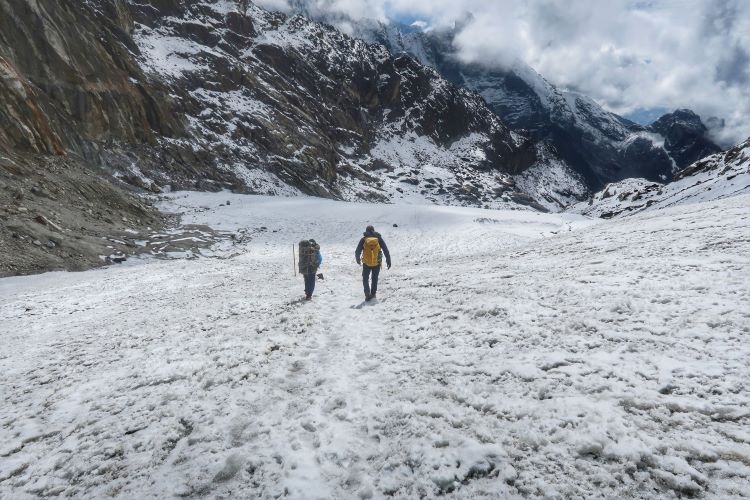
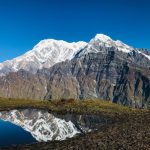 Saturday, August 30th, 2025
Saturday, August 30th, 2025
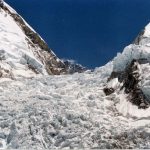 Wednesday, August 27th, 2025
Wednesday, August 27th, 2025
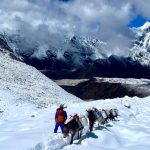 Wednesday, August 20th, 2025
Wednesday, August 20th, 2025
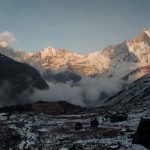 Wednesday, August 20th, 2025
Wednesday, August 20th, 2025
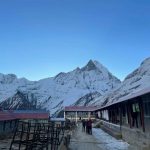 Wednesday, August 13th, 2025
Wednesday, August 13th, 2025
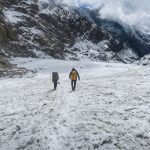 Wednesday, August 6th, 2025
Wednesday, August 6th, 2025
 Monday, July 7th, 2025
Monday, July 7th, 2025
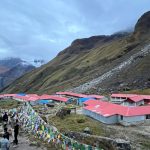 Thursday, July 17th, 2025
Thursday, July 17th, 2025
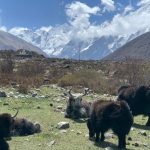 Monday, July 7th, 2025
Monday, July 7th, 2025
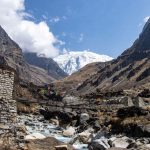 Friday, May 9th, 2025
Friday, May 9th, 2025
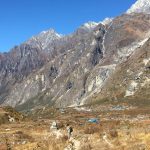 Saturday, June 14th, 2025
Saturday, June 14th, 2025
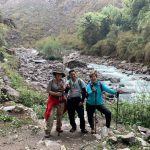 Wednesday, June 25th, 2025
Wednesday, June 25th, 2025
 Tuesday, August 5th, 2025
Tuesday, August 5th, 2025
